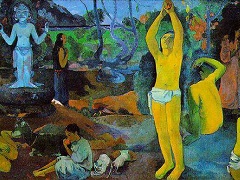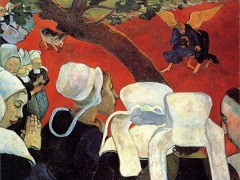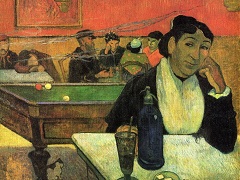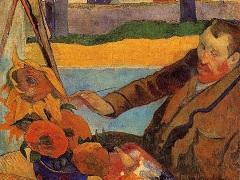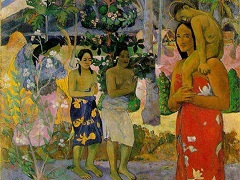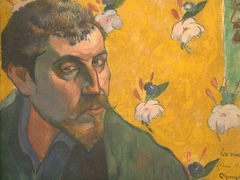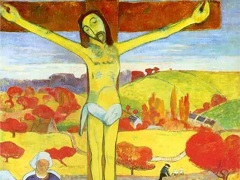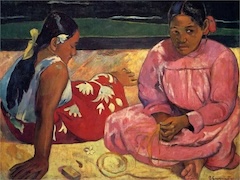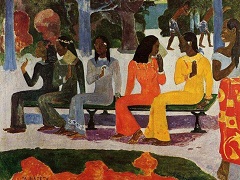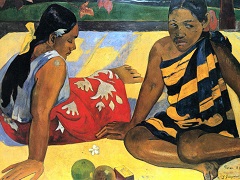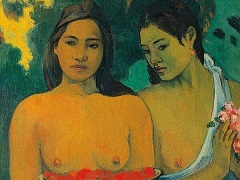The Green Christ, 1889 by Paul Gauguin
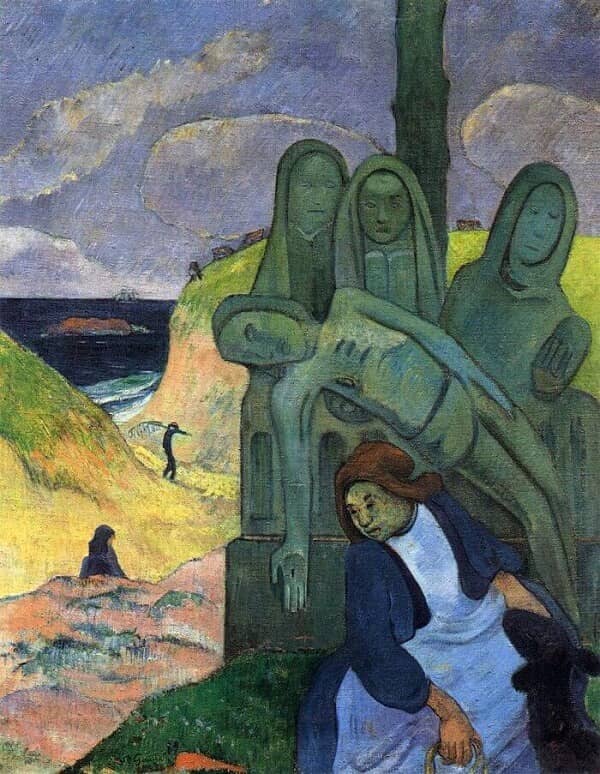
The Green Christ was painted by Paul Gauguin in 1888 while he was in Pont-Aven, France. It is an oil on canvas piece and is currently located at the Musees royaux des Beaux-Arts de Belgique.
In October 1889, Gauguin settled in Marie Henry's inn at Le Pouldu, an isolated village in Brittany. One after the other, he produced such works as The Yellow Christ, The Green Christ, La Belle Angele. These works showed that he was in full possession of his art, with an equally masterful control of vision, plastic form, and technique.
Toward the end of his stay in Brittany, in 1889, the ancient Breton calvaries gave a soul to Gauguin's emerging style and to a form which would have drifted otherwise toward Art Nouveau. IN the Green Christ, the plastic form and arrangement, which was already emerging from Naturalism, is transformed; it is struck by a religious solemnity, a perception of an unknown god.
Like the statue in the The Yellow Christ, the Green Christ had an identifiable source in a mossy stone calvary that Gauguin had seen at Nizon near Pont-Aven. He has again treated the impact of religious faith on the Breton woman, who crouches in the foreground in front of the deposition, a graphic blending of the real and the illusory that had already been explored in both Vision After the Sermon and The Yellow Christ. Again, the counterpoise of the quotidien is suggested by expressive, apparently uninterested background figures, here a seaweed gatherer returning from the beach.
The picture may be seen as a later event in Christ's Passion - the bright colours of the Yellow Christ have given way to sombre tones, as his dead body is lifted down from the cross. Again, the face is a thinly-disguised self-portrait, another in the line of works in which Gauguin has dealt with the theme of martyrdom, likening his suffering to that of Christ.
Paul Gauguin commonly created works of art that were based on Christ's crucifixion. The Green Christ is one of his most symbolic paintings he created during his time.
The Green Christ features three dead figures holding Christ after he had passed. These seem to look like statues that are taking him away to be in another world. They are a dark color of green that fades out when the eye sees the woman that is sitting in the front of the painting. She is sitting on a grass field that is next to a beach, which a few people are walking around on. The simplified shades and unrealistic colors are what suggest the different situations the people in the piece are in.

